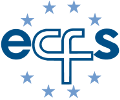Basic Science Conference 15-19 April 2009, Tavira, Portugal - Report from the Chairpersons
Michael Gray, Newcastle University, UK
Mitchell Drumm, Case Western Reserve University, USA
Margarida Amaral, University of Lisboa, Portugal
On behalf of the European Cystic Fibrosis Society, we were delighted to chair this year’s Basic Science Conference in the lovely town of Tavira, in the Algarve region of Portugal.
Our aim in organizing this meeting was to help foster and initiate new research towards a better understanding of the pathogenesis of CF. We believe that ultimately this will lead to new and improved therapies for CF being developed which will have a real and lasting impact on treating the disease.
The organization of the meeting represented something of a break from past conferences as our co-chair and initiator of these events, Margarida Amaral, has “stepped down” from the helm, but agreed to continue sharing her valuable experience and support.
The conference attracted a record number of participants (106) from 12 European and North American countries, and 41 abstracts. With 2 Keynote lectures, 10 symposia, 4 Special Group Discussions, and 2 evening Poster sessions, we had a very full and challenging programme. Speakers discussed a variety of hot topics of basic research into cystic fibrosis, with many presenting unpublished data which greatly added to the immediacy and exciting nature of the meeting. Topics ranged from new insights into the effect of CFTR mutations on the 3D structure of CFTR, its gating, folding and processing, right through to the primary role of CFTR (or not!) in epithelial and macrophage inflammation and ability to fight bacterial infections. We heard about the development of lung disease in two distinct transgenic animal models; longer lived CF pigs, as well in TMEM16A (the recently cloned calcium-activated chloride channel) knock-out mice. It is very significant that lack of two different chloride channels both result in mucus build up and plugging of the airways. Clearly, these animal models are going to be invaluable for a better understanding of the progression of airway disease, as well in the development of improved rehydration therapies for CF. Significant progress is also being made in the area of lung repair and regeneration and these studies added to the scope and breadth of the meeting. Fascinating new information was described about how the CFTR gene itself is regulated, and how genetic modifiers and the environment markedly influence the progression of lung disease. In this regard we heard that well described gender differences in CF patients may well be due to female-specific dysregulation in calcium-dependent chloride secretion in the airways. It was also particularly exciting to hear about how basic research has led to the development of new therapeutic strategies to treat CF disease. These included a variety of strategies to improve the activity of faulty CFTR as well up-regulation TMEM16A chloride channels. On the reverse side we heard that new, highly active, inhaled ENaC inhibitors are also in the pipeline. There was also a dedicated symposium on translating basic research into clinical practice. This included new results from pre-clinical drug tests on CF animal models ex vivo, as well as very encouraging data about the use of ICM (intestinal current measurement) and sweat gland potential difference as new tests for monitoring the effectiveness of corrective therapies, an area which is becoming increasingly important in CF. Our key note speakers provided us with new concepts about the control of mucus hydration and we learnt that the PCL is now viewed as a ’grafted polyanionc brush’! We also had valuable insights into the use of new post-genomic tools for identifying the primary genes and proteins that are responsible for the basic problems in CF cells. Interestingly the estrogen receptor reared its head as a central player in a network of regulated genes in CF. There is no doubt that major advances in basic CF research in the 21st century is going to rely heavily on these new tools and applying this knowledge to biological processes in CF.
A key feature of these conferences is the active participation of many young researchers, both PhD students and Post Docs. This year was no exception and the quality of the work presented orally and as posters was extremely high. We would like to thank all of you who presented your work at the meeting. This of course made the award of the best poster prize (sponsored by Bayer) a difficult decision but in the end joint first prizes went to Christophe Blohmke (Canada), and Paul Buchanan (UK). Congratulations to both of you! The attendance of young researchers was greatly helped by substantial travel awards from Novartis and the Cystic Fibrosis Trust. We would like to thank them both for their continuing support of this meeting. This year also saw the introduction of a new initiative to encourage young students - six free registrations were offered in exchange for support and help during the conference. Many thanks to the student helpers for doing such a great job and we hope you enjoyed the experience.
Finally, we would like to extend special thanks to those groups on both sides of the Atlantic who supported the conference. Without this support these meetings would not be possible. This meeting clearly demonstrated that basic research into CF is strong and vibrant and we look forward to hearing more exciting news in 2010.
Michael Gray, Newcastle University, UK
Mitchell Drumm, Case Western Reserve University, USA
Margarida Amaral, University of Lisboa, Portugal
Conference website
www.ecfs.eu/tavira2009
Best Poster Awards
